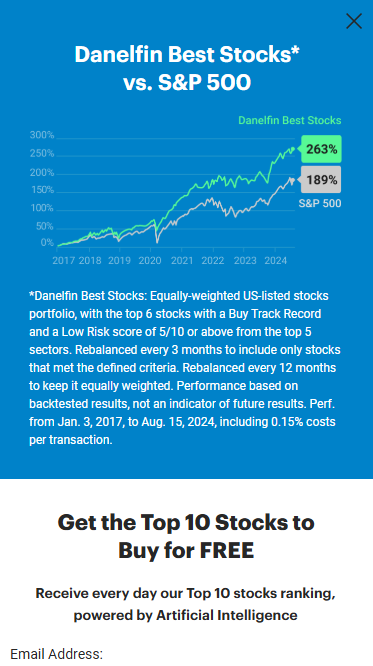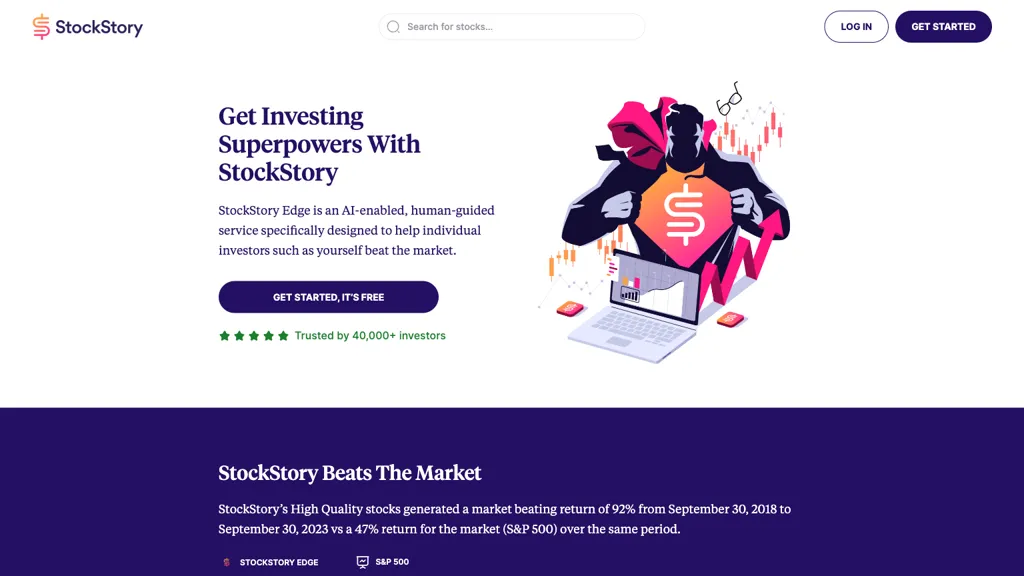20 Great Suggestions For Choosing AI Stock Predictions Platform Sites
20 Great Suggestions For Choosing AI Stock Predictions Platform Sites
Blog Article
Top 10 Suggestions On How To Assess The Strategy Customization Of Ai Trading Platforms
It is important to note that AI trading platforms with stock analysis and prediction can give users the option of customizing their platform according to their trading objectives, risk tolerances, and market conditions. Platforms that offer a variety of customizations can enhance your trading. Below are the top 10 suggestions for evaluating the ability to customize your strategy on these platforms:
1. Evaluate Pre-Built Strategy Templates
The variety of templates available: Find out whether the platform provides a range of pre-built strategies to suit different styles of trading (e.g. swing trading, day trading, and long-term investing).
The user's experience is a good indication.
Performance history: Verify if the platform provides historical performance data for pre-built strategies.
2. Examine Custom Strategy Creation
Drag-and-drop: Look for platforms that provide drag-and-drop interfaces when creating custom strategies.
Find out about coding options. For more advanced users, it may be necessary to verify if the service allows custom programming.
Flexibility: Make sure the platform lets you set your entry/exit parameters as well as risk management metrics and other important components of your plan.
3. Check for Backtesting Capabilities
Data historical: See whether there is enough data to backtest your strategies.
Modifiable parameter: Make sure you have the ability to adjust parameters while backtesting (e.g. indicators and timeframes).
Performance metrics - Make sure to see if your platform offers detailed performance indicators (e.g. the win rate, Sharpe coefficient, or drawdown) for all strategies tested back.
4. Evaluate Real-Time Strategy Testing
Paper trading: Make sure that the platform supports paper trading and simulation modes to test strategies in real time without placing your money at risk.
Live testing: See whether you can test your strategies on real market conditions with small amounts of capital.
Real-time adjustment: Determine if it is possible to alter strategies in response to market conditions.
5. Examine the degree of integration using technological indicators
Check if there is an indicator library.
Custom indicators. You must ensure that you are able to design or implement custom indicators to your plan.
Combination of indicators: Look whether the platform supports combining multiple indicators for more complex strategies.
6. Check for Risk Management Tools
Stop-loss/take-profit: Ensure the platform allows you to set stop-loss and take-profit levels within your strategies.
Size of the position: See if you can define the rules for sizing your position (e.g. fixed amount or percentage of portfolio) to reduce risk.
Risk-reward Ratio: Verify that the platform supports setting individual risk-reward levels for strategies and trades.
7. Evaluate Multi-Asset Strategy Support
Asset classes: Make sure that the platform can support strategies in multiple asset categories (e.g. stocks, ETFs or options, forex).
Cross-asset strategies: Determine whether you can make strategies that encompass various asset classes (e.g. pairs trading, hedges, etc.).
Market coverage: Check if the platform offers the services you need (e.g. US, international or copyright).
8. Assess Automation and Execution
Automated Trading: Check whether the platform is able to implement strategies in a way that is automated based on rules predefined.
Order types: Verify that the platform is able to execute different order types, such as market, limit and stop.
Latency: Verify that the platform has a low latency when trading, especially if you use high-frequency strategies.
9. Make sure you are using tools to optimize your strategy.
Parameter Optimization: Ensure whether the platform provides tools for optimizing strategies parameters (e.g. genetic algorithms grid search).
Machine learning: Ensure the platform you choose to use has machine learning to help refine and improve strategies.
Scenario evaluation: Determine whether your platform can test different strategies in various market scenarios, such as bearish, bullish, or volatile.
Review User Comments
User reviews: Research user feedback to gauge the platform's effectiveness for strategy personalization.
Community forums: Find out whether the platform has an active community where users share and discuss custom strategies.
Support resources: Make sure that the platform is equipped with tutorials, documentation, as well as webinars that will assist users in creating and implementing strategies.
Bonus Tips
Trial period: Use an unpaid trial or demo to test the platform's strategy and customization capabilities.
Scalability is important. The platform should be able handle strategies that get more complicated when your trading expands.
Customer support: Check for assistance for questions related to strategy or issues.
By following these tips you will be able to evaluate the potential of AI platforms for analyzing and predicting stocks to modify strategy. This will allow you to select a trading platform that aligns with your objectives in trading and permits you to apply and improve strategies. A platform that provides a wide range of customization options will let you better adapt to market changes and boost your trading performance. View the best ai for investing examples for blog info including ai investing platform, trading ai, ai stock trading bot free, stock ai, ai stock, ai investment app, ai investing, ai for trading, investment ai, ai stocks and more.
Top 10 Tips To Assess The Transparency Of Ai Stock Trading Platforms
Transparency should be considered when evaluating AI platforms for stock trading and prediction. Transparency is crucial since it lets users trust the platform, be aware of the choices made, and check the accuracy. These are the top ten tips for assessing the authenticity of these platforms:
1. AI Models - A Short explanation
Tip Check to see if the platform has a clear description of the AI algorithms, models and platforms that are used.
Why: Understanding the underlying technology can help users evaluate its validity and weaknesses.
2. Disclosure of Data Sources
Tip
What do you know: By understanding the sources of data, you can ensure that the platform has accurate and complete information.
3. Performance Metrics and Backtesting Results
Tips - Search for transparent reporting regarding performance metrics such as accuracy rate, ROI and backtesting.
This is to allow users to compare historical performance with current platform.
4. Updates in Real Time and Notifications
Tips. Find out if your platform can provide real-time information and notifications regarding trades or changes in the system, like trading forecasts.
Why: Real-time visibility ensures that users are always alert to critical actions.
5. Limitations Communication open
TIP: Check if your platform explains the limitations and risks of the strategies used to trade and its predictions.
The reason: Recognizing your weaknesses will build trust with the users and assist them in making informed choices.
6. Data in Raw Data to Users
Tip: Determine whether the AI model can be utilized to access raw data, intermediate results or both.
Why: Raw data access allows users to do their own analysis and verify their predictions.
7. Transparency and transparency in fees and costs
Make sure you read the terms and conditions of any platform you're thinking of using.
Transparent pricing builds trust and prevents surprises.
8. Regular reports and audits
Check if your platform is routinely audited by third parties, or you can find reports about its performance.
Independent verification increases credibility and accountability
9. Explainability of Predictions
Tips: Make sure the platform has information on how recommendations or predictions (e.g. importance of feature, decision tree) are created.
Why Explainability allows users to better comprehend AI decisions.
10. User feedback and support channels
Tip: Determine whether there are channels of communication that allow users to give feedback and receive support. Also, consider if it is transparent in its response to concerns expressed by users.
Why: Responsive communication demonstrates an interest in transparency and the satisfaction of users.
Bonus Tip Regulatory Compliance
Check that the platform is in compliance to and is open about its compliance with the financial regulations. This provides another layer of trust and transparency.
Make informed choices by assessing all of these aspects. Read the recommended ai stock analysis for website tips including best ai penny stocks, best ai stocks to buy now, best ai stock prediction, stock predictor, ai trading tool, best ai stocks to buy now, ai share trading, ai stock price prediction, ai options, trading ai tool and more.